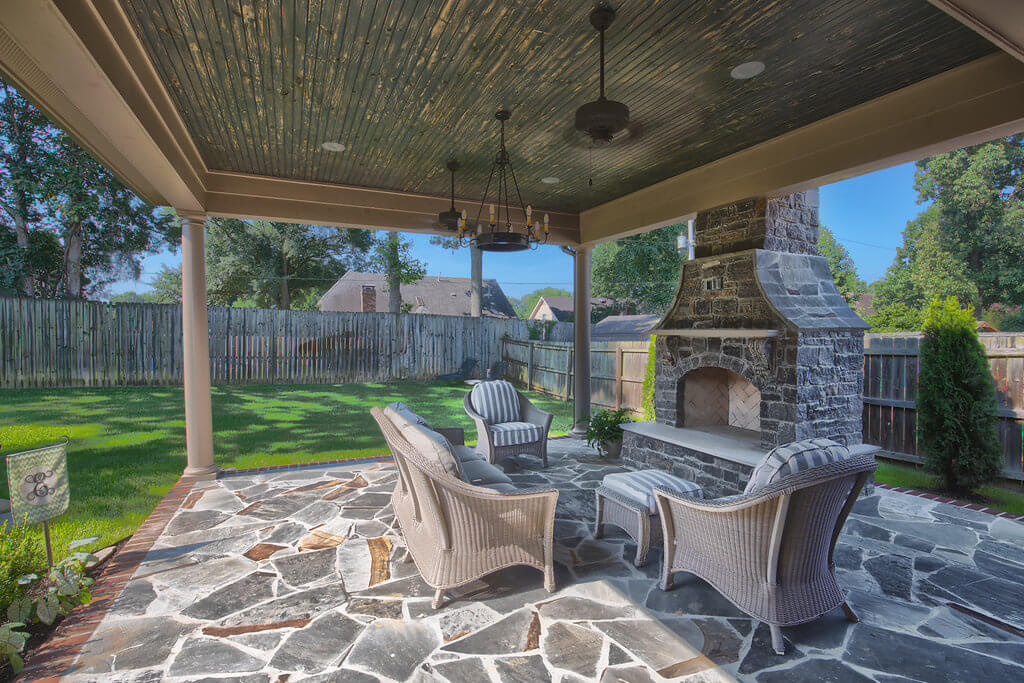Beautiful, functional landscaping is a combination of style and space. Successfully balancing these two elements can be challenging, but if done thoughtfully, it will result in a landscape design that you’ll love spending time in. If you’ve considered refining your current landscape design, begin by understanding what will best match your style and complement your site.
While many people tend to simply jump right into a landscape renovation, when refining a landscape design, it’s often more effective to take a structured approach consisting of three stages: Inspiration, Editing, and Clarification.
Design Inspiration Stage
Creativity begins with inspiration, and there’s no shortage of inspiring ideas out there. The trick at this stage is to begin broad, then narrow down.
Don’t limit yourself
There are so many options available in landscaping and creating outdoor spaces today that it can feel a bit overwhelming. So have fun with it! Start by spending some time browsing stores and sites, taking note of anything that catches your eye.
As you do this, think about the main ways in which you’d like to use your refined landscaping, garden, or outdoor space. At this stage it can be helpful to capture your inspirations: save images, do screen grabs, bookmark sites, or create a Pinterest page.
What’s your home’s style and architecture?
Every home has its own style, and refining your landscape design should take this style into account. Is your home a Cape Code style? A ranch? Does it have lots of red brick? Wood shaker siding? All of these style elements and more should be considered in refining your landscape design.
While your landscaping style doesn’t need to perfectly match the style of your home, following the lines, colors, materials, and scale of your home can provide a much more complementary result.
Design Editing Stage
You’ve started very broadly, gathering a wide range of images, sites, and ideas that pique your interest. Next, review your cache of saved materials with an eye to narrowing them down. Which styles do you like most? Which would complement your home’s style and architecture best? Which would thrive in your climate?
Don’t try to do it all
While it can be difficult to feel like you are eliminating good ideas, it’s helpful to realize that you can’t do everything. The goal of this stage is to move away from “blue sky” brainstorming and start to edit down your list so that you begin to move in the direction of creating a plan.
Pare down to one or two designs
It’s good to keep in mind that, while you are editing down your list, you don’t need to stick to a single landscape design style. For example, having a simple, modern design can be your focal point while allowing you to include more traditional elements like a border of your favorite flowers. However, when reviewing your list, try to pare it down to one or two main garden styles that fit your preferences. This will help give you a more focused vision of your goal. The more specific you can be here, the better.
Design Clarification Stage
Once you’ve reviewed and edited your list, narrowing it down to one or two styles, it’s time to clarify what you like about those styles. Like the previous stages, this can feel challenging at first, but keep in mind that you’ve already eliminated styles that don’t suit you, and this is your opportunity to hone in on what it is you truly like.
Get specific
Spend a bit of time looking at each image and pick out specifically what you see in it. Do you like the look of a row of potted plants on either side of a walkway? Does a split-rail fence complement your home’s architecture well? Does your outdoor space allow for a decorative pond that you’ve always wanted?
Identify patterns
As you get more specific about your preferences, try to identify patterns. Do you prefer structure and symmetry, or a more natural, asymmetrical layout? Do you tend toward more straight lines, or do you like sweeping curves? Identifying these patterns in your preferences will help define your landscape design vocabulary, which further aids in finalizing elements like plant choices, hardscape, and materials.
Partner with a Professional
While following the structured stages above can significantly help you in refining your landscape design, the best way to ensure that you’ll achieve the results you want is to work with a professional landscape architect or designer.
Covenant Pool And Landscape has a wealth of expertise and experience in creating and refining landscaping and outdoor spaces. We will work alongside you to understand your vision, assess the possibilities with your existing outdoor space, present you with the best available options, help you finalize your plans, and build an outdoor space that you’ll love. Contact Covenant Pool And Landscape today to get your project started.

How to Enhance your Outdoor Living Space Project
Questions to Ask your Swimming Pool Contractor
How To Refine Your Landscape Design
5 Reasons to Consider a Landscape Design-Build Firm for Your Project

